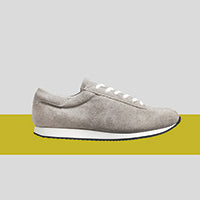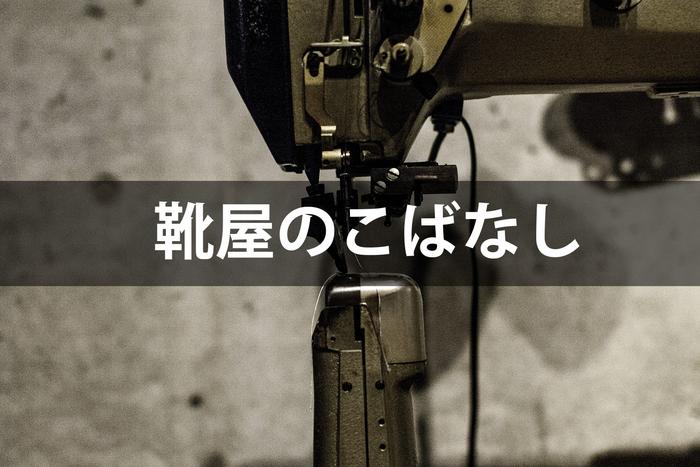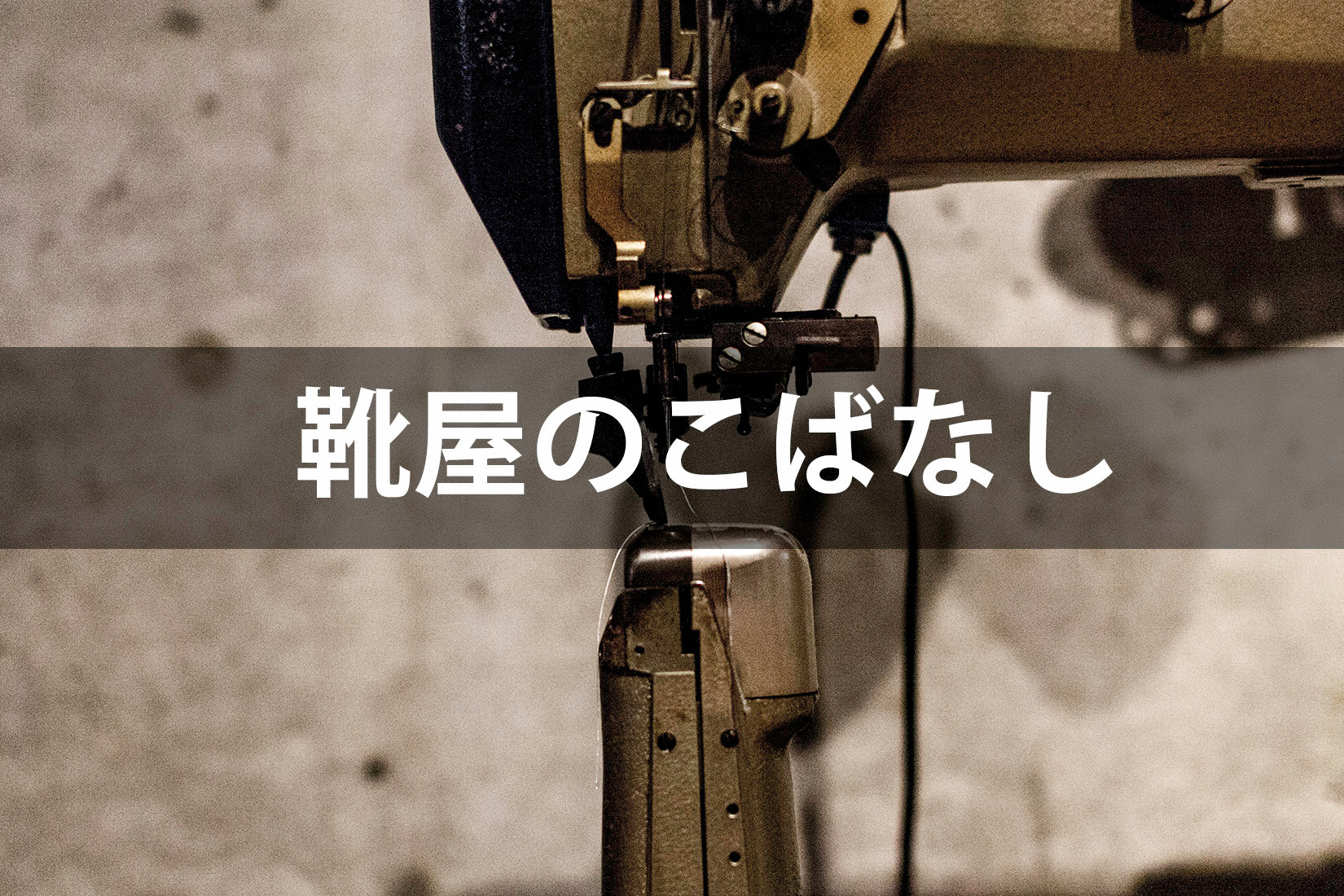Shoemaker's story #08|About materials
 |
ZUCCO Blue over sample craftsman. The shoes are made by hand, from the pattern to the sewing and shoemaking. We also handle factory arrangements and material setup. @blueover_zucco |
This series is a compilation of several notes I wrote in order to explain my work, namely making shoes, as clearly as possible.
<About the core material of the toe and heel>
Hello, this is zucco from the blueover team.
Try touching the shoes. If the toe and heel are hard, the shoe has a core material called a ``toecap'' in the toe and a ``counter'' in the heel. It is hard to tell at a glance, but it is enclosed between the outer leather and the inner leather (lining).
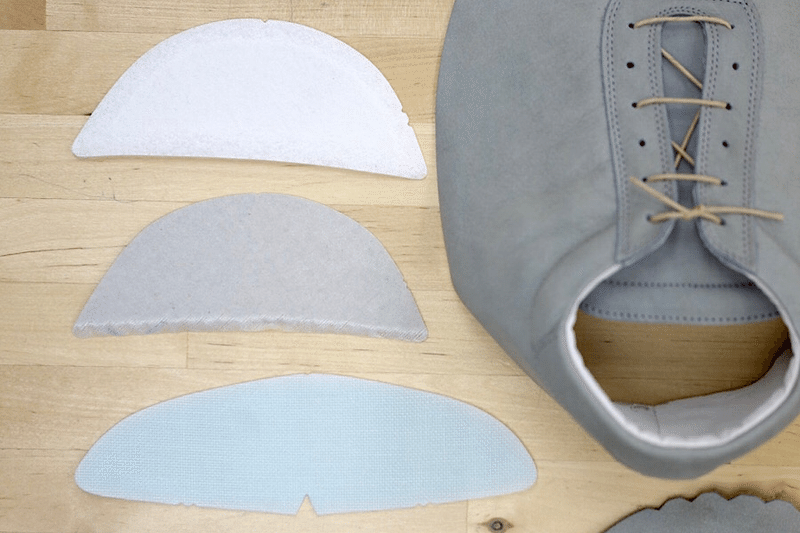
Toecap
By inserting the toe cap, it hardens in the shape of a wooden last, so it is properly expressed on the shoe and prevents it from losing its shape. It also protects your toes.
counter
It protects the heel and supports the arch of the foot. It also provides stability when walking. It prevents the shoes from losing their shape.
If you step on your heels or wear shoes without a shoehorn, the counter may collapse. Be careful, once it gets crushed, it won't go back to normal, and the broken counter inside your shoe may hit your foot and cause pain!
material
The materials used for the toecap and counter vary.
When I was making shoes by myself, I used a hard toe cap that softened when soaked in a liquid called solvent, such as paint thinner. For the counter, we used a leather floor or something called a leather boat purchased from a wholesaler.
I soaked it in water, made it big enough to put it in the shoes I made, and used it by pasting it with white glue.
*It is still sometimes used when creating samples.
Our current production method uses a method called ``hot melt'' to make shoes. It becomes soft when heated and hardens when cooled. While it is being softened by heat, it is molded along the wooden mold to retain its shape.
Most of the shoes made in Japan are made with this "hot melt". It is more resistant to tearing than leather counters, and when making shoes, it is easy to work with the back part to determine the height of the heel, allowing for efficient and smooth work.
If you want to mass produce a certain number of pairs, hot melt is recommended. You will need to make a cutting die, but you can ask a material store to make it relatively quickly.

This year, we updated the toe cap and counter. Next, I would like to write about that story.
<Story about finding core material>
I mentioned that the toe part contains a core material called a "toe cap" and the heel part contains a core material called a "counter".
I recently updated the core material for each, so today I'll talk about that time.
Why it's new
In fact, this spring, the core material of blueover's standard model Mikey has been updated.
We've been using the brand for 10 years now and haven't had any problems, so there's no need to change it, right? You might think that. In fact, there was no need to change the quality. However, the company we purchased it from went out of business, so we had to find a new supplier.
Looking for a factory
I was looking for a new factory. I contacted an insole shop that I had not been working with for over 5 years to get an introduction.
They introduced us to us because they have a long relationship with a Kobe company that sells toe caps and countertops.
What was important to me when searching for factories and materials this time was that it was not much different from the current Mikey. This is because we have received feedback from customers who have been using our products for a long time without any problems for 10 years.
I was shown some material samples from the other company, and although the counter looked good, the toecap looked soft and was rejected.
Next, I contacted the factory that makes the current Blueover insoles. I was able to see some of the materials here as well.
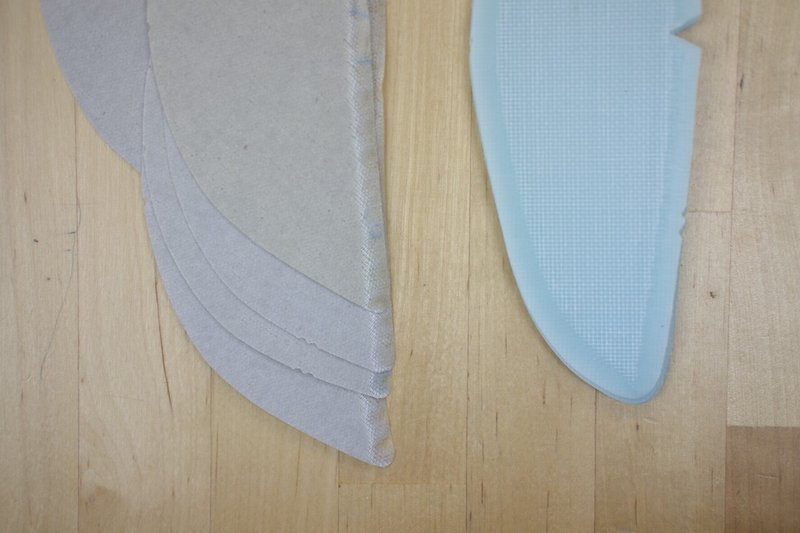
Try making a prototype
I collected some toecaps and counters. Even if you think, "This looks good," you won't be able to mass-produce it all at once. I narrowed down my options to two pieces, one for the toecap and one for the counter, and tried making them into shoes.
Even if the finished product is good, we will not be able to hire the product if there is inefficiency in the work at each factory, such as sewing or fishing, so we will listen to the factories and look at the final product.
And the mission to change new materials was a success.
Afterword
When making shoes, there are many ingredients and a lot of time and effort that goes into making them, even if you can't see them. Renewing the toe cap and counter this time may seem simple at first glance, but it was a mission that took more than a month because it required sewing and fitting.
Change in order to remain the same.
“New and unchanged. New unchanged.”


